Contents
It might be surprising for you that atmospheric air can never be 100% dry. There is always a particular amount of moisture present in it, although it is invisible to us. However, when we compress air for various industrial purposes, then the ratio of water to air should be exact to avoid any difficulty. But, when we compress the air, water vapors come closer to each other and they change into a liquid. This appearance of water droplets makes the air wet.
On the other hand, a compressed air system cannot function properly with the air having liquid. So, it’s become a great necessity to remove that extra moisture from the air. Here we will briefly discuss the ways to remove this moisture, the reasons behind it, and problems associated with it.
What is the pressure dew point?
What is the pressure dew point?
Before proceeding further you must have know-how about the pressure dew point. Moisture in air varies depending upon the temperature. It is more hot than cold. Pressure dew point(PDP) is a measuring standard for moisture. It relates to the temperature that air should have to meet the same proportion of dryness. -40°C is the desired PDP in several industrial applications to attain the same moisture level of -40°C.
Problems associated with moisture in compressed air
Problems associated with moisture in compressed air
Moisture in compressed air is one of the serious concerns to deal with and you can’t avoid it in any way. There are many setbacks linked with moisture that may hinder operational activities. Let’s discuss them one by one.
- Corrosion is the most threatening outcome of moisture in compressed air. In this process water molecules and oxygen present in the air react with metal. Whenever metal comes in contact with water, reactions between them occur, resulting in eroding of the metal. It shortens the life of metal equipment and speeds up the rate at which metal rust.
- Another problem is the blocking of control lines. It avoids instruments from reading and operating appropriately. It causes poor functioning of instruments.
- Moisture is deteriorating to the air tools as it staves off from proper lubrication. Loss of lubrication results in erosion of moving parts and needless system drain.
- Bacteria may grow in the compressed air mainly used in the food and medical industry. The humid and moist environment is more favorable for bacterial growth. It damages the quality of food and medicines and makes them injurious to health.
- It may also cause the leakage of water from open valves.
- Moisture may result in water hammer events. Few knocking sounds indicate the devastation of equipment and piping.
- At low temperatures, water vapors may condense to form ice inside the system. Ice may seal the filters. The volume of ice increases due to lower density. This expansion may break down the pipes and other components of the system. Hence, the overall performance of the system is greatly affected due to this cold temperature malfunctioning.
- If you are using a compressor to paint spray, moisture inside compressed air may disrupt visual and texture effects.
- It lowers the quality of air that makes you unable to meet up with the quality standards of heavily overseen industries.
Major ways to extract moisture from compressed air
Major ways to extract moisture from compressed air
As we know, moisture is a natural part of compressed air. It’s crucial to remove that moisture to avoid any disturbance. We have different options to remove moisture that may be simple or complicated. Due to the wide diversity in the usage of compressed air, there are different ways to extract moisture. Let us evaluate them thoroughly.
Draining the air collector tank:
It’s vital to learn how to dehydrate your air compressor. It is the very first stage to get rid of moisture. Hot air rises from the pump containing water vapors. However, when it moves towards the receiver tank, the air cools down. This decrease in temperature makes water vapors compress back into liquid droplets.
Now, you need to ensure that surplus water collected at the bottom of the tank is regularly draining to control moisture levels. It is done with a manual drain valve. You have to drain the air compressor every time you use it to prevent assembling of rust inside the tank.
There are automatic timer-based valves that eradicate the need to recall to dehydrate the receiver tank. This valve opens automatically in response to the detector and discharges extra liquid. It is helpful for you to use an automatic tank drain when the air receiver tank is not in a handy location. If it is difficult for you to get access to the drain valve, you can install a drain extension kit for your ease. Draining will not remove water in gas form suspended in the air, however, but it is highly helpful in the prevention of an abundance of water in the tank and air supply lines.
Filtration water separators
In the next stage, we adopt self-regulating separation to remove moisture from compressed air. For this purpose, we use an air compressor water separator. Pressure keeps on varying inside the tank that causes air to pick up water vapor that may damage your valuable tool. So, to avoid this, we make use of centrifugal force.
These separators elicit a spinning motion to the compressed air as it passes from the separator. It provokes the water molecules to speed up, and they push towards the outer rim. Now, they collect inside a separator housing where they can be filtered. It is a highly significant process to remove most moisture from the air. This separation may be done manually, or you can install an automatic drain system to ease the overall process.
Cooling of air by refrigerated air dryers
Refrigerated air systems work similarly as air conditioners do. We make use of a refrigerated air system when further removal of moisture is needed. They mainly function by cooling the air. Warmer air has more moisture than cold air; that’s why we can refrigerate the air to reduce the moisture.
A refrigerated air dryer chills the air by reducing temperature between 35F° to 50F°. It changes the pressure dew point between 33°F to 39°F, which is a standard need. At such a low temperature, water vapors come closer to each other, intermolecular forces between them increase, changing the state of water from vapor to liquid. Now, you can collect this liquid water into a water ramp where it can be removed by automating the drain valve. Dry is heated again to room temperature before sending it to the production lines.
It is one of the most efficient ways to remove moisture from compressed air due to its economic usefulness. There are two types of refrigerated air dryers. One is cycling and another one is non-cycling.
Desiccant Air Dryers
Few applications need very dry air and you can not achieve that target from the above methods. For this purpose, we use desiccant air dryers. It is a chemical process associated with various chemical reactions.
A bunch of small beads is called desiccant beads. Silica gel-activated alumina and molecular sieves are the most common desiccants. They are solid and chemically react with water to form a bond. Air is pushed towards the middle of the pressure vessel, where desiccant beads band water and hydrocarbon molecules. After reaching a particular PDP, compressed air is discharged from the vessel. Then, in the regeneration cycle, the pressure of compressed air is reduced to the normal level. Desiccant air dryer consumes more power than other dryers.
Absorption drying
Besides using different dryers for removing moisture, you can also go for absorption drying. It is also a chemical process. In this process, you use sponging chemicals like sodium chloride(NaCl) and sulfuric acid (H2SO4). They absorb excess moisture. It is not a common method yet you can consider it due to the following advantages.
- It is less expensive than drying tools as you don’t need to buy additional equipment.
- It is simple to keep up as there is no involvement in electrical parts. Moreover, you don’t need to scrutinize it all the time.
However, few drawbacks are also linked with it, like:
- You have to add absorptive material again and again that wastes your time
- It may block the tank due to its solidifying nature.
- Sediments from the material may be sent to another part of the air compressor.
- It is not as effective as drying methods when it comes to lowering the dew point.
Dry air by using a piping system
In this method, you use the piping system to remove moisture from dry air. It is constructed in a way that various metal pipes are arranged in an up and down assembly. They function as heat absorbers and lower the temperature of the air. Thus, the low temperature cools down the water vapors and condenses them into liquid. Different drip legs present at the bottom of pipes receive water. It is the cheapest method to remove moisture. We particularly use this in compressed air systems of small office buildings and self-reliant artisans.
Conclusion
Conclusion
As we already analyzed, moisture in compressed air is hazardous from many aspects, and you can’t avoid it unless you find the best-suited solution. You can go for any of the mentioned solutions to remove moisture for better working of tools and appliances that use dry air. Be vigilant while buying a dryer for your setup, as not every dryer is perfect and completely functional. So, we can sum up the whole debate by indicating that clean, dry compressed air boosts product quality and enhances equipment efficiency.


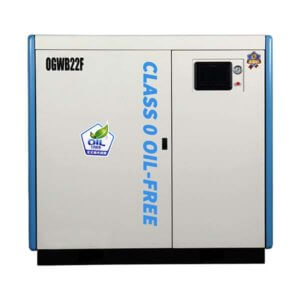
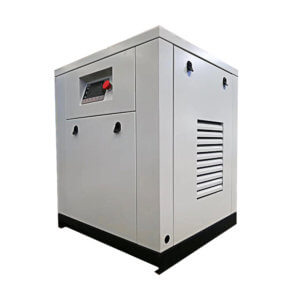
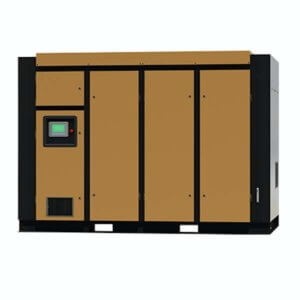
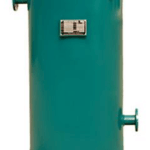
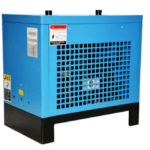
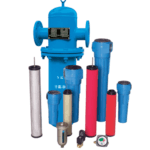




Leave A Comment